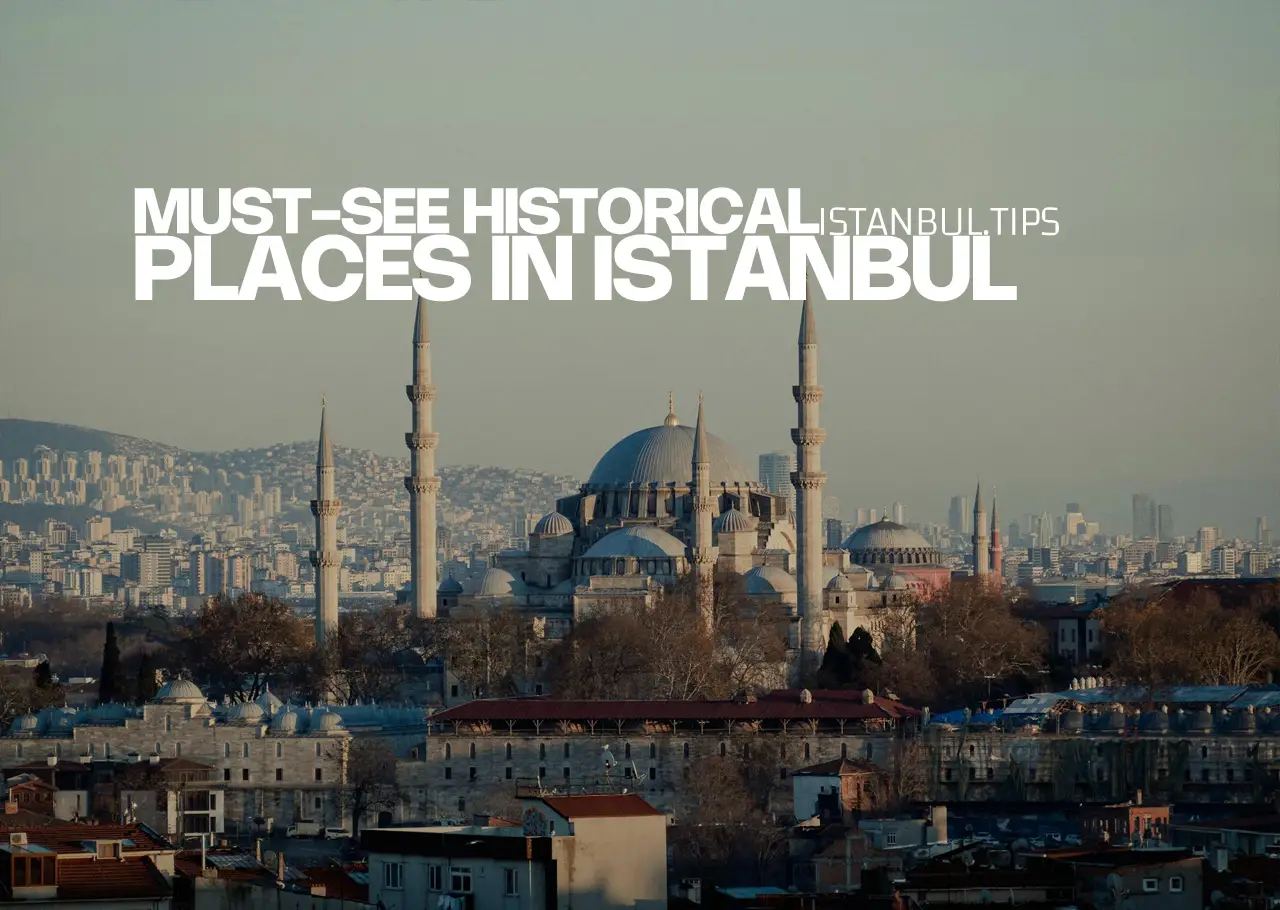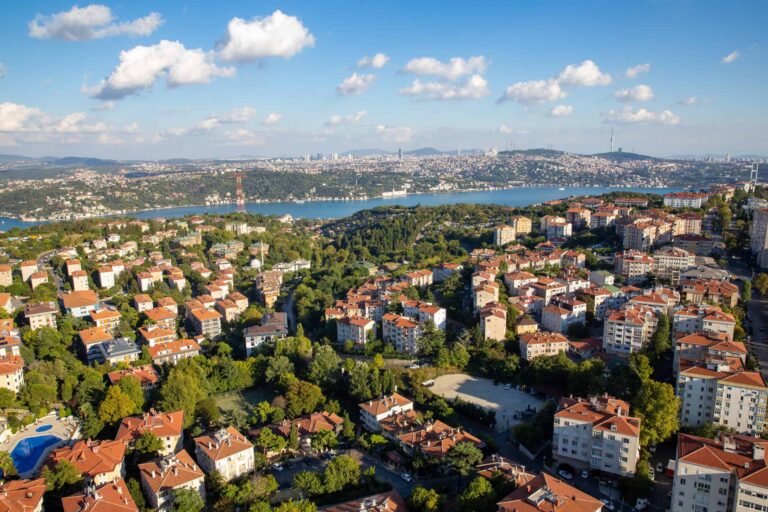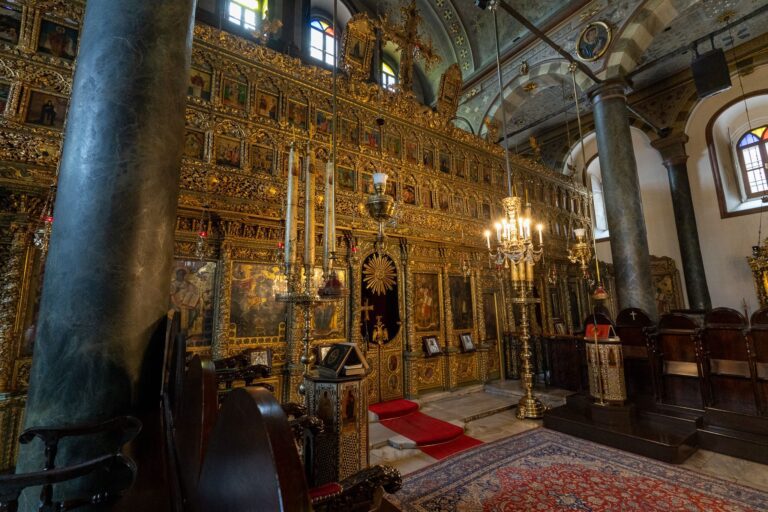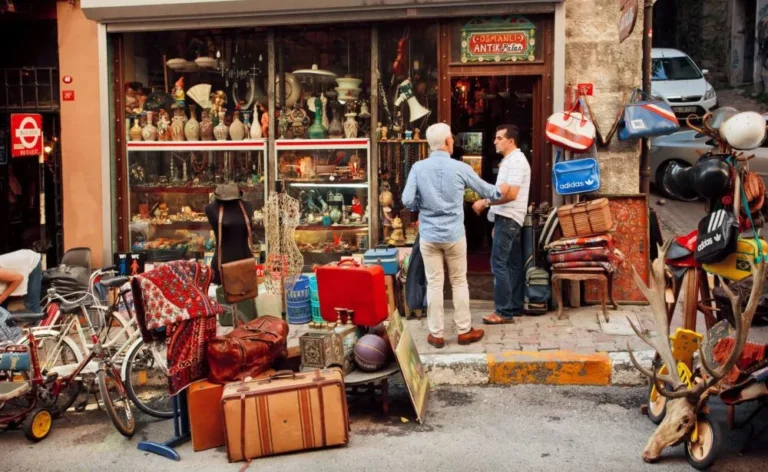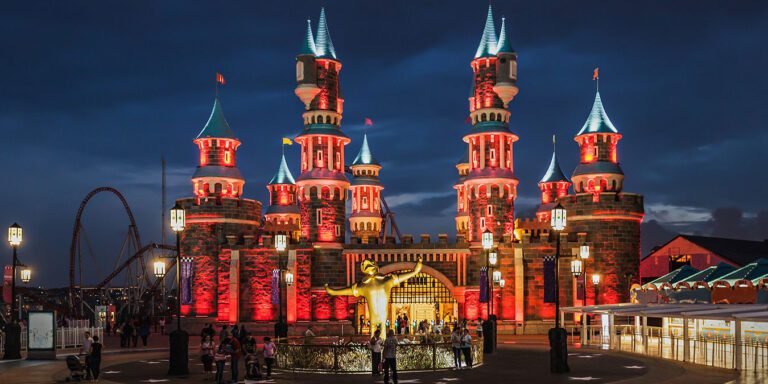Must-See Historical Places in Istanbul: Checklist (2025)
Pay Once and Have Free Attractions Entry for 7 days
Are you visiting Istanbul and have no idea what to see in this magnificent city? Don’t worry, we have got you covered! Istanbul is a city full of history, culture, and breathtaking sights that can be explored even in a short time. In this article, we will take you on a journey to discover the best historical places to see if you have never been in Istanbul!
🕌 Discover Famous Landmarks of Istanbul
Istanbul: Topkapi Palace & Harem Museum Ticket & Audio Guide 🌟 4.2 / 5 (205 reviews)
Istanbul: Basilica Cistern Skip-the-Line Entry & Audio Guide 🌟 4.4 / 5 (318 reviews)
Istanbul: Blue Mosque & Hagia Sophia Small-Group Tour 🌟 4.4 / 5 (318 reviews)
Mosques
Süleymaniye Mosque (Süleymaniye Camii)
Built between 1550 and 1557 by the renowned Ottoman architect Mimar Sinan, this is one of Istanbul’s grandest mosques. Located on the city’s third hill, the mosque offers stunning views of the Bosphorus and the Golden Horn. It combines Islamic and Byzantine architectural elements and serves as a symbol of the height of the Ottoman Empire. The mosque complex includes a hospital, a library, schools, and Sinan’s tomb. Read more >>
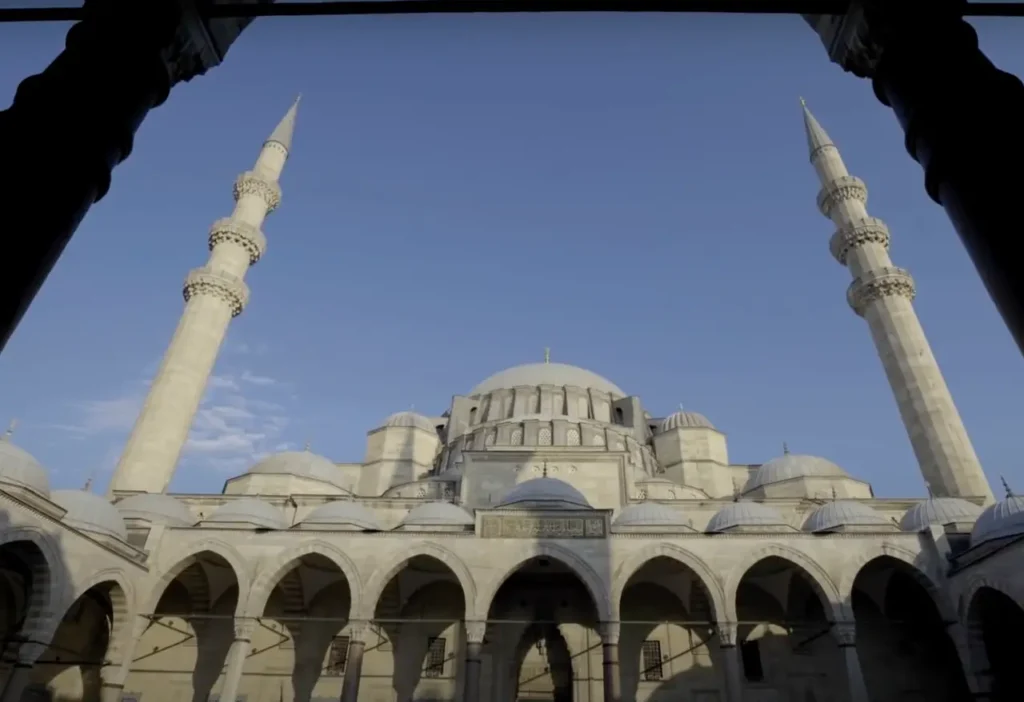
Blue Mosque (Sultan Ahmed Mosque)
Famous for its six minarets and blue İznik tiles, the Blue Mosque was constructed between 1609 and 1616 during the reign of Sultan Ahmed I. It faces Hagia Sophia and remains an active mosque today. The mosque’s architecture is a blend of traditional Islamic styles and Byzantine elements, reflecting the influence of Hagia Sophia. Inside, there are over 20,000 handmade ceramic tiles and more than 200 stained-glass windows.
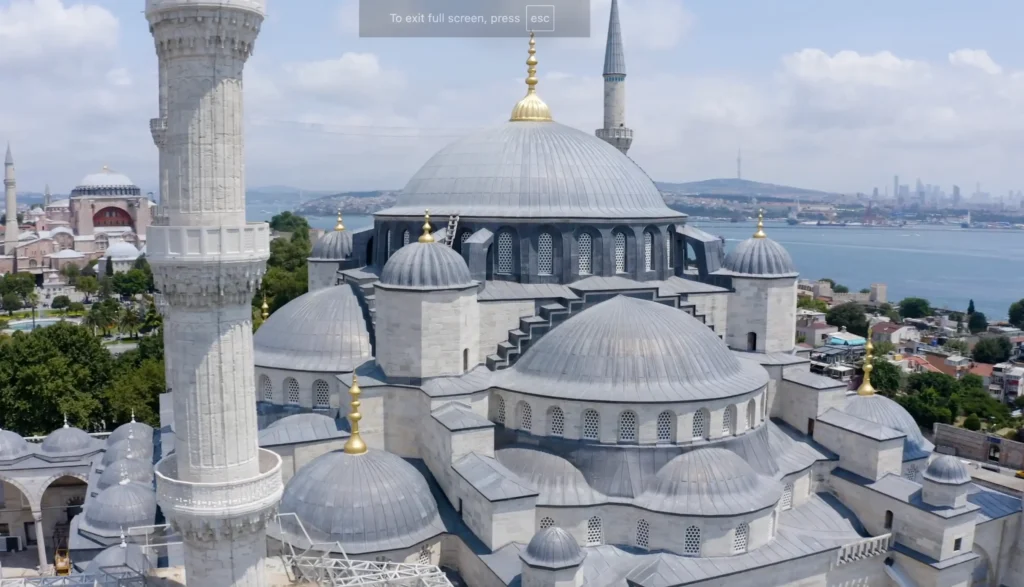
Eyüp Sultan Mosque
One of the most sacred places in the city, the Eyüp Sultan Mosque is located outside the city walls, near the Golden Horn. Built in 1458, it is the burial place of Abu Ayyub al-Ansari, a companion of Prophet Muhammad. The mosque and its surrounding complex are pilgrimage sites for Muslims. The courtyard houses ancient tombstones, and the mosque itself has a deeply spiritual atmosphere, enhanced by its Ottoman architecture.
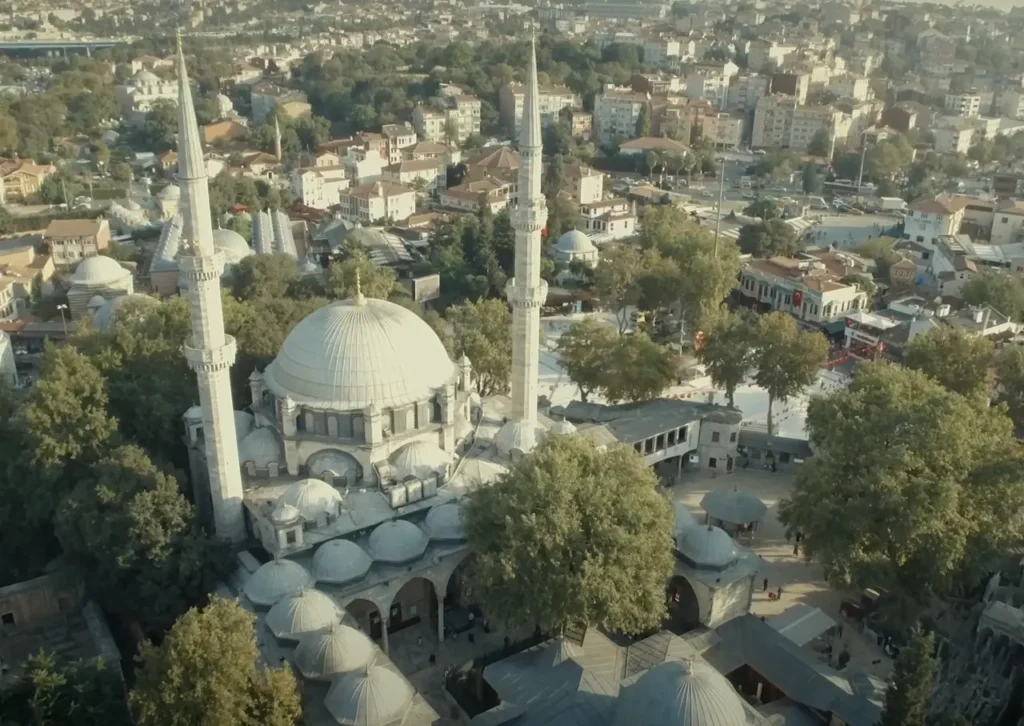
Fatih Mosque (Fatih Camii)
Built on the site of the ancient Church of the Holy Apostles, Fatih Mosque was completed in 1470 under the order of Sultan Mehmed the Conqueror. It was the first grand imperial mosque constructed after the Ottoman conquest of Constantinople.
The mosque complex once housed schools, a library, a hospital, and markets, making it a center of education and culture. Despite being destroyed in an earthquake and later rebuilt, its importance remains.
Bonus: Tomb of Sultan Mehmed II (Fatih Sultan Mehmet)
Located within the Fatih Mosque complex, this tomb holds the remains of Sultan Mehmed the Conqueror, who led the Ottomans to capture Constantinople in 1453.
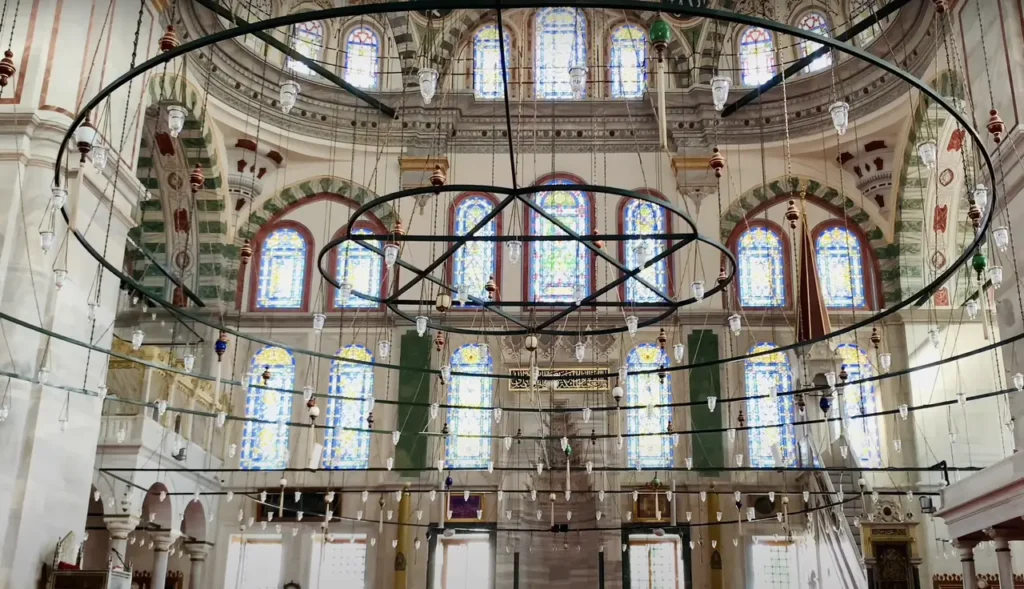
Nuruosmaniye Mosque
Built between 1748 and 1755, the Nuruosmaniye Mosque is one of the finest examples of Ottoman Baroque architecture. Located at the entrance to the Grand Bazaar, this mosque symbolizes a shift in Ottoman design, with its grand dome and lavish interior decor. Unlike earlier mosques, which emphasized simplicity, Nuruosmaniye is more ornate, reflecting European influence on Ottoman art and architecture in the 18th century.
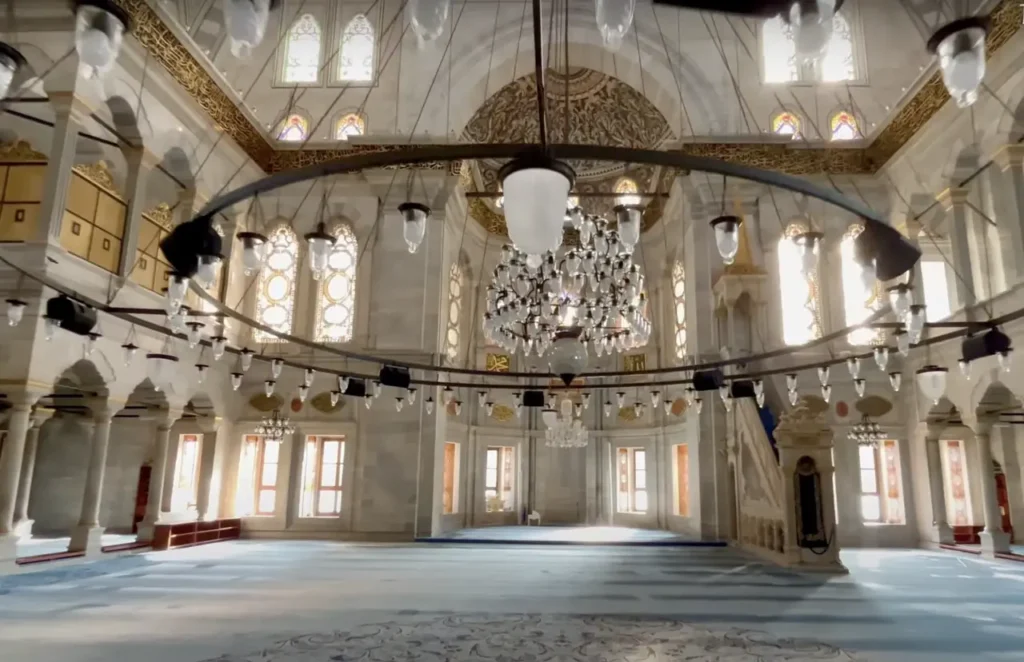
Don’t Miss The Best Tours and Cruises in Istanbul
Palaces
Topkapi Palace
The grand residence of Ottoman sultans for nearly 400 years, Topkapi Palace was built by Sultan Mehmed II after the conquest of Constantinople. The sprawling complex includes courtyards, pavilions, and treasuries displaying invaluable artifacts, such as the Topkapi Dagger and the Spoonmaker’s Diamond.
The palace also houses the Harem, where the sultan’s family lived. A visit here reveals the opulence and intrigue of the Ottoman Empire. Read more >>
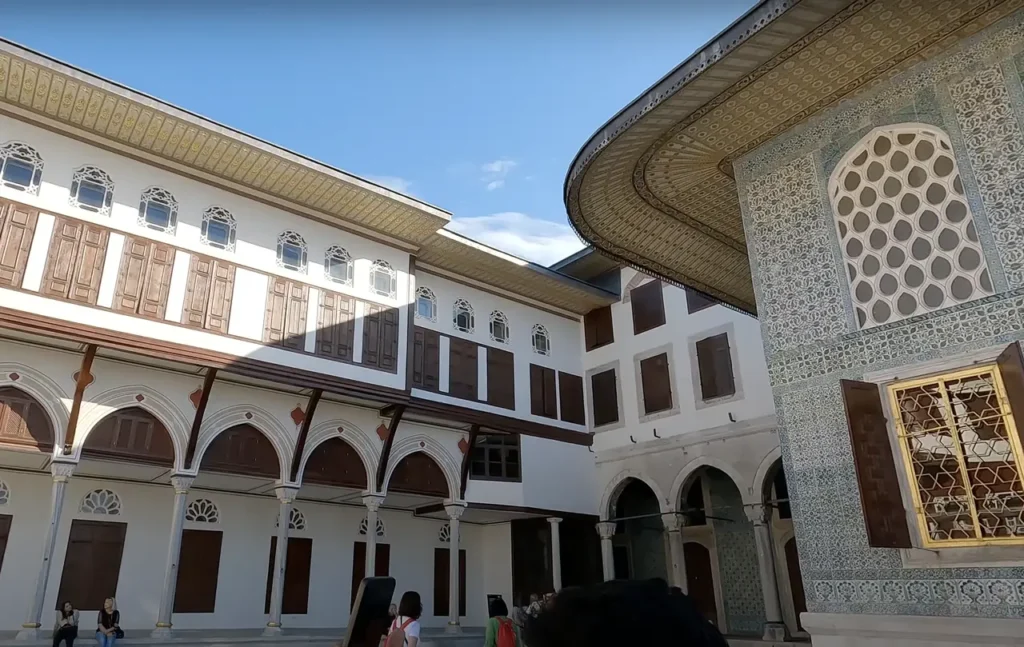
Dolmabahçe Palace
Completed in 1856, Dolmabahçe Palace reflects the Ottoman Empire’s increasing ties with Europe. Built by Sultan Abdülmecid I, it blends Baroque, Rococo, and Neoclassical styles with traditional Ottoman architecture.
The palace is famous for its opulent rooms, including the Ceremonial Hall, and the world’s largest Bohemian crystal chandelier. Atatürk, the founder of modern Turkey, also spent his final days here, making it a key historical site. Read more >>
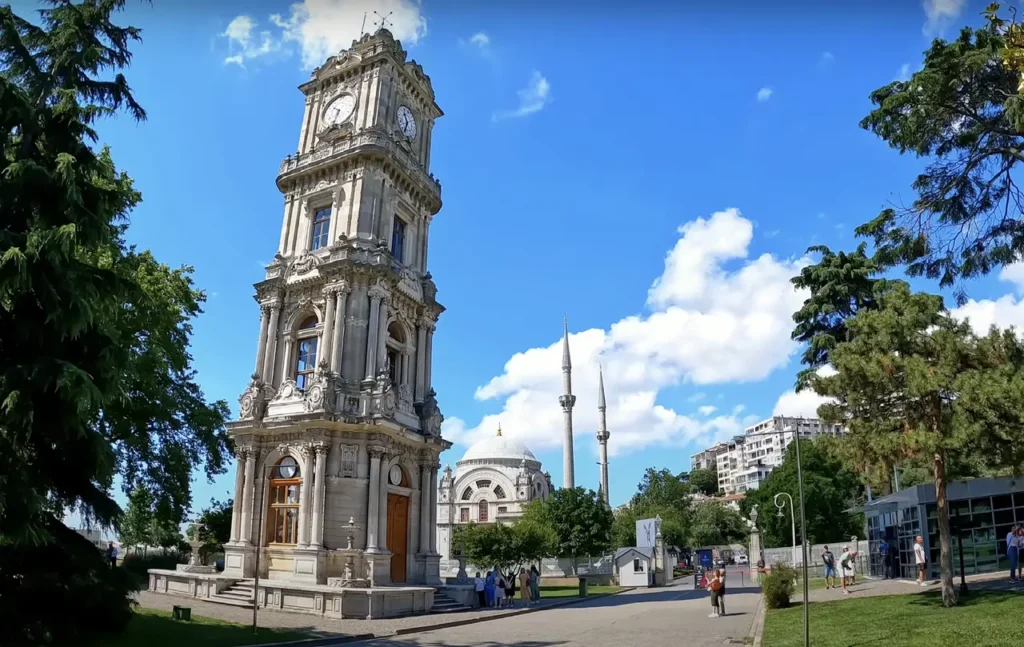
Beylerbeyi Palace
Situated on the Asian shore of the Bosphorus, Beylerbeyi Palace was built in 1865 as a summer residence for Sultan Abdülaziz. The palace hosted visiting dignitaries and is a prime example of 19th-century Ottoman architecture.
Its interior blends European and Eastern styles, featuring grand chandeliers, richly decorated ceilings, and beautiful carpets. The palace’s location offers a quiet escape, with spectacular views over the Bosphorus. Read more >>
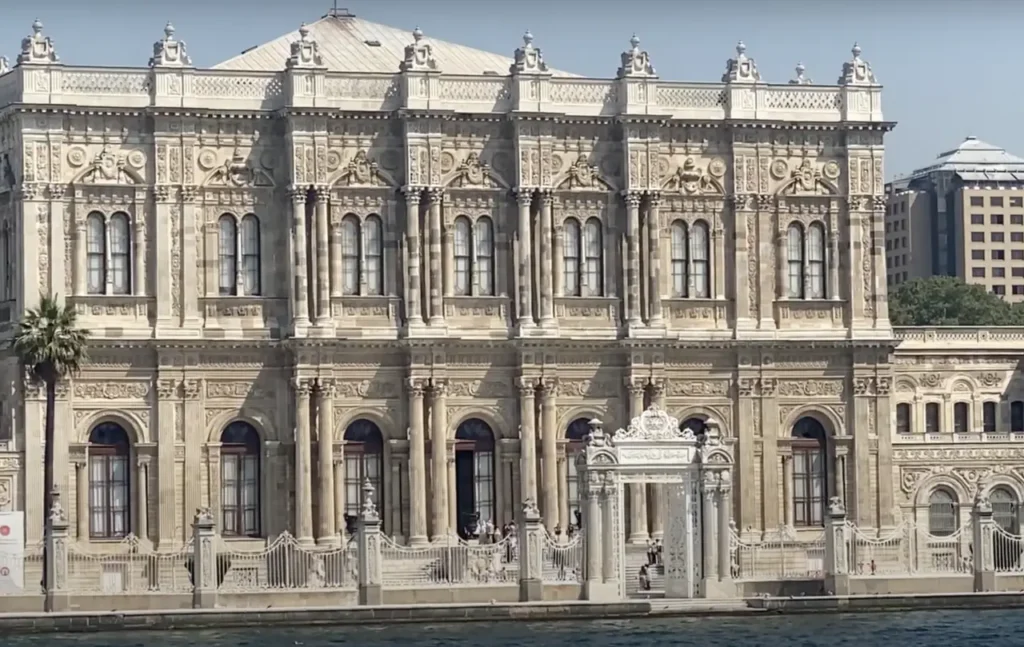
Çırağan Palace
Located between Beşiktaş and Ortaköy, Çırağan Palace was built in the mid-19th century by Sultan Abdülaziz. Once a royal residence, it was destroyed by fire in 1910, leaving only its outer walls. It has since been restored and transformed into a luxury hotel. The palace’s marble facade and riverside location make it one of the most visually stunning landmarks in Istanbul.
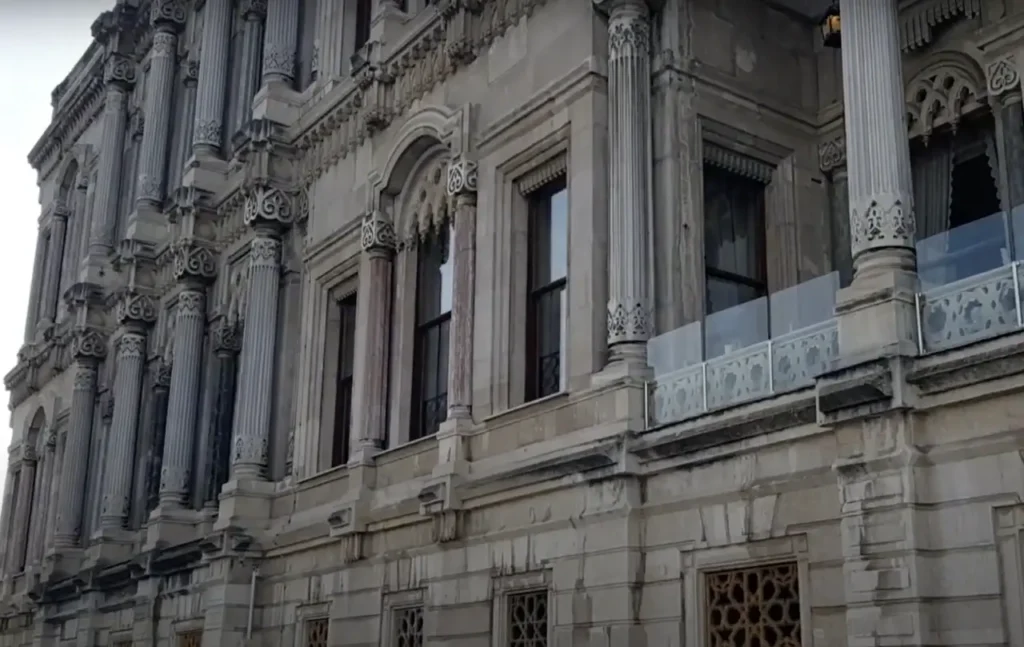
Museums
Hagia Sophia
Originally built as a Byzantine cathedral in 537, Hagia Sophia has served as an Eastern Orthodox church, a mosque, and now a museum. Famous for its massive dome, intricate mosaics, and Islamic calligraphy, it stands as a symbol of both Christian and Islamic heritage.
After its reconversion into a mosque in 2020, it remains a must-see for anyone interested in the layered history of Istanbul. Entry is free for worshippers, while a ticket is required for tourists to visit the upper galleries.
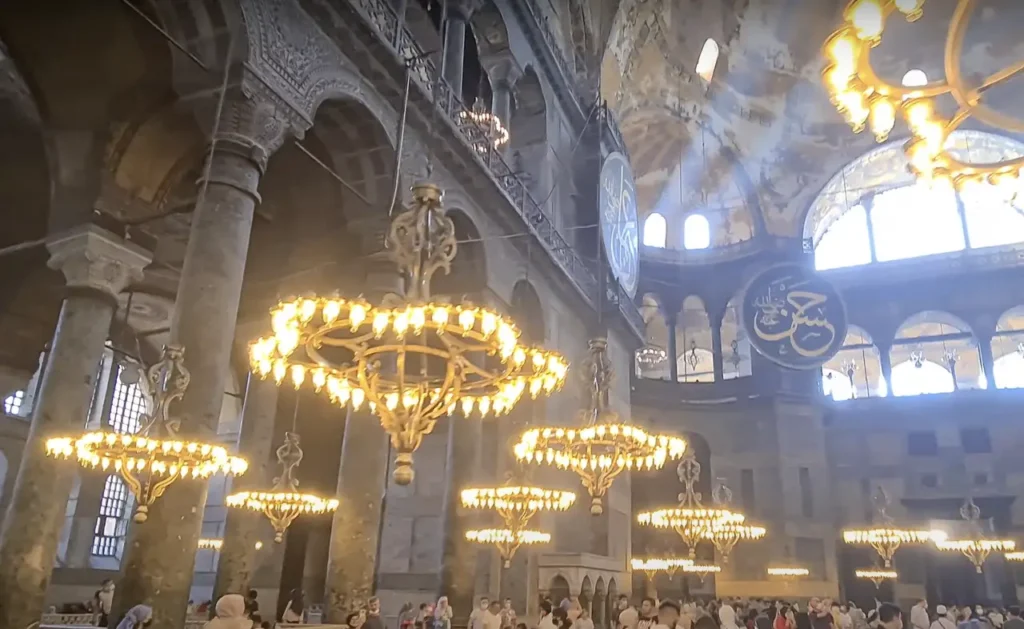
Istanbul Archaeology Museums
Comprising three museums, the Istanbul Archaeology Museums hold some of the world’s most important artifacts, including the Alexander Sarcophagus and the Kadesh Treaty, the world’s oldest peace agreement. The museum complex is located near Topkapi Palace and provides a deep dive into the ancient civilizations that shaped Istanbul and the surrounding regions.
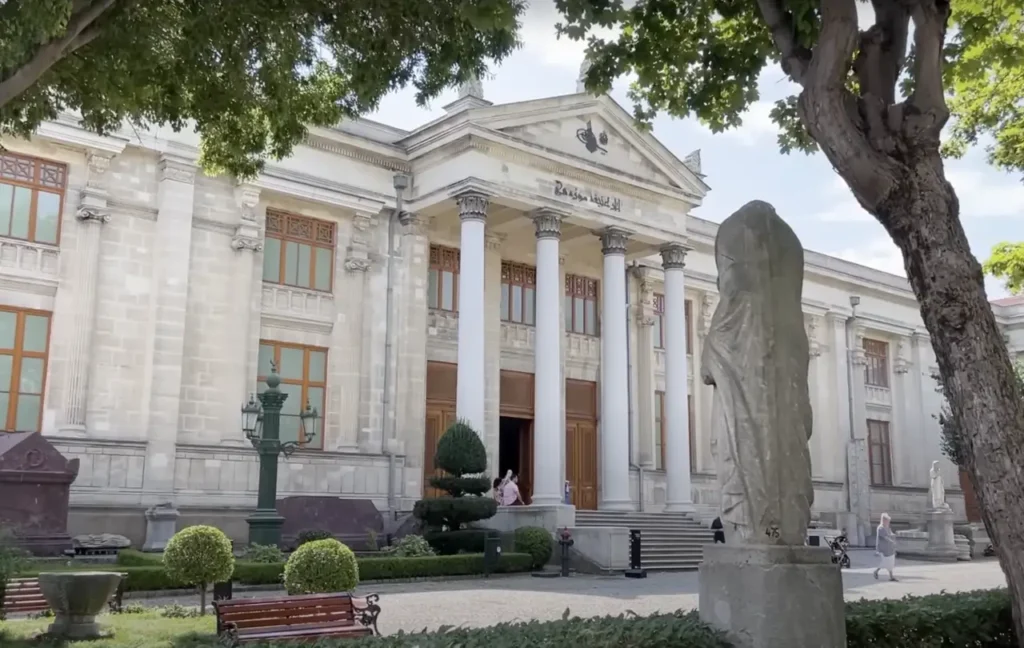
Museum of Turkish and Islamic Arts
Housed in the former palace of Ibrahim Pasha, this museum holds one of the world’s best collections of Islamic art. The exhibits span from the 8th to the 19th centuries, showcasing Islamic calligraphy, carpets, ceramics, and manuscripts.
The museum also gives insight into daily life during the Ottoman period with recreated rooms from traditional Ottoman houses.
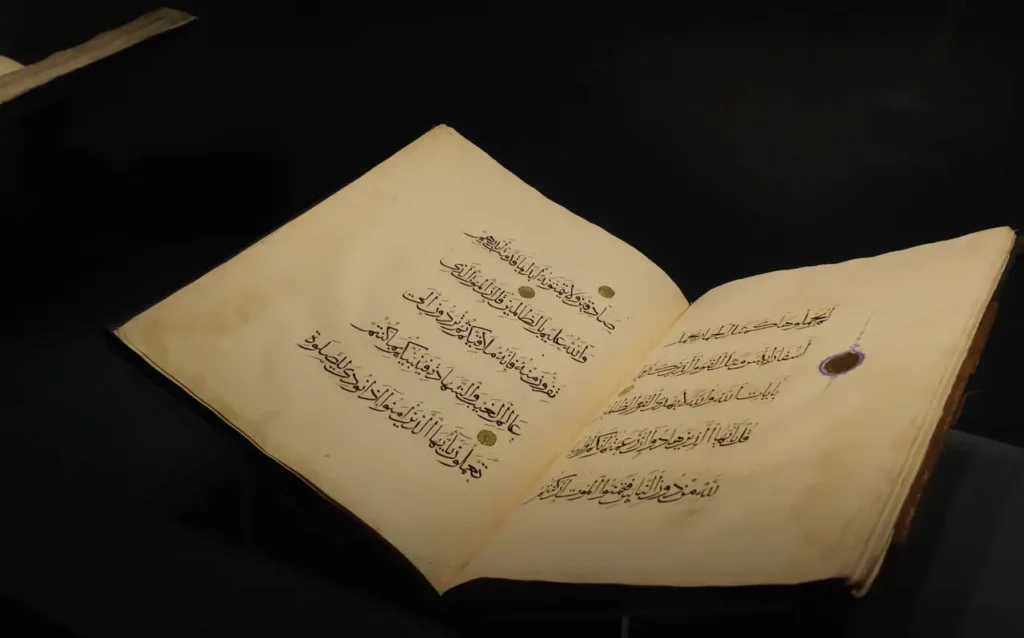
Chora Museum (Kariye Museum)
A hidden gem in the Fatih district, Chora Museum was originally a Byzantine church and later a mosque. Famous for its stunning mosaics and frescoes depicting scenes from the life of Christ and the Virgin Mary, it offers one of the finest examples of Byzantine art in Istanbul.
It was a museum until 2020 when it was reopened as a mosque. The site is famous for its intricate 11th-century Byzantine mosaics and frescoes. Non-Muslim tourists can visit outside of prayer times.

Cisterns
Basilica Cistern (Yerebatan Sarnıcı)
Built by Emperor Justinian I in the 6th century, the Basilica Cistern is the largest surviving Byzantine cistern in Istanbul. It once provided water to the Great Palace of Constantinople. Its towering columns and dimly lit, mystical atmosphere make it one of the most visited historical sites in the city. The famous Medusa heads supporting two of the columns add an enigmatic touch to this underground marvel.

Theodosius Cistern (Şerefiye Sarnıcı)
Less crowded than the Basilica Cistern, the Theodosius Cistern was built in the 5th century during the reign of Emperor Theodosius II. It has recently been restored and now hosts art exhibitions and light shows, offering a beautiful visual and historical experience.
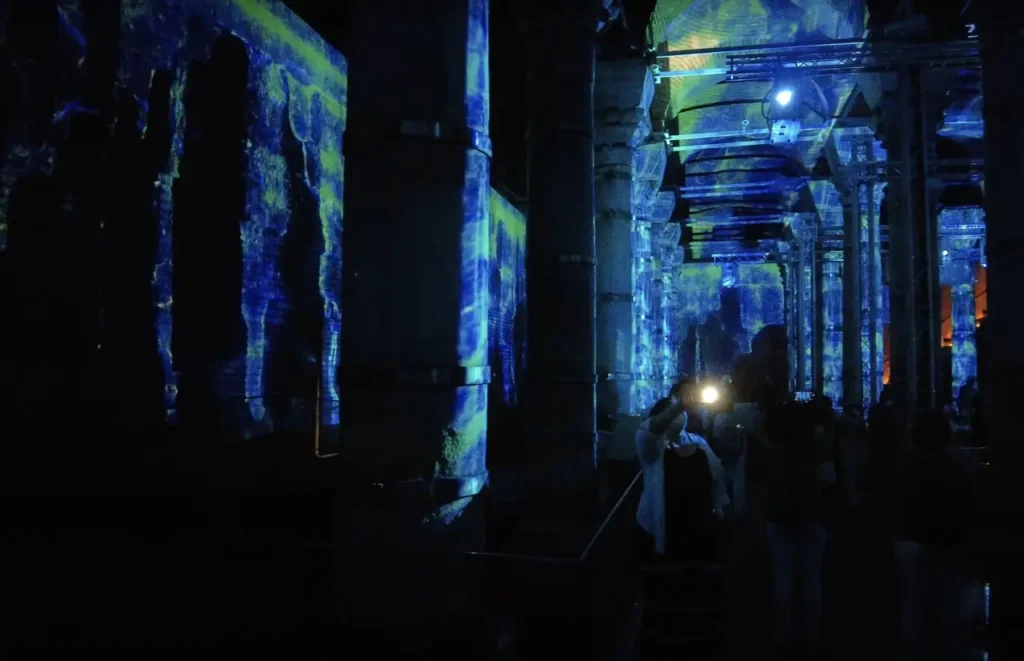
Fortresses
Galata Tower (Galata Kulesi)
Location: Bereketzade, Galata Kulesi Sk. No:7, 34421 Beyoğlu, Istanbul, Turkey
Originally built in 1348 by the Genoese as part of their fortifications, Galata Tower offers some of the best panoramic views of Istanbul. Standing at 67 meters, it once served as a lookout tower and even a prison. Today, it is a popular tourist attraction and museum.
Visitors can climb to the observation deck to take in sweeping views of the Golden Horn, Bosphorus, and key landmarks like Topkapi Palace and Hagia Sophia.
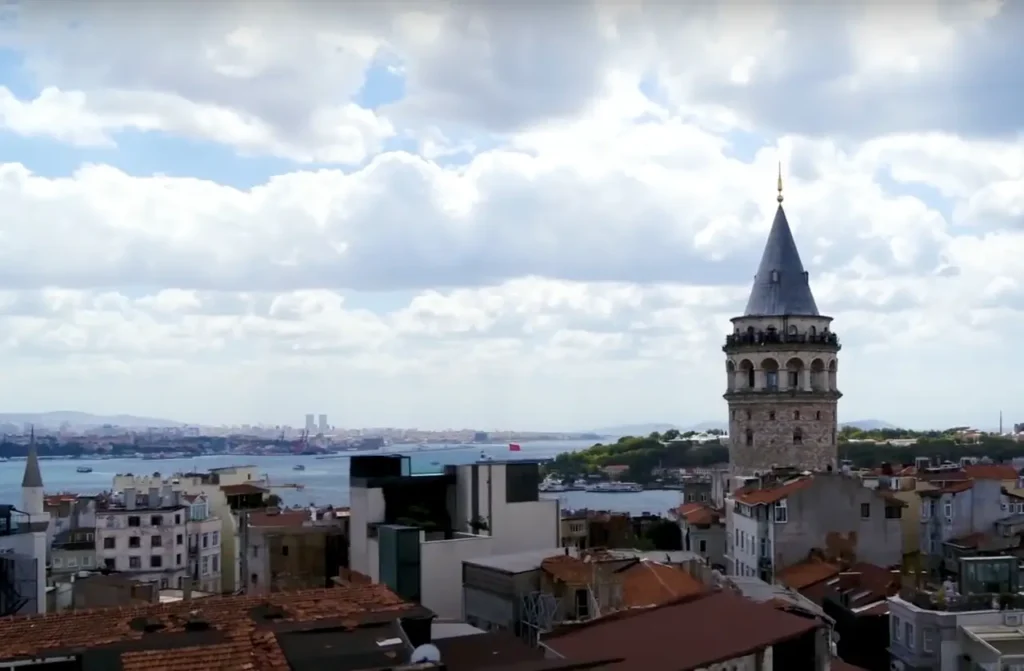
Rumeli Fortress (Rumeli Hisarı)
Built in 1452 by Sultan Mehmed II to prepare for the conquest of Constantinople, Rumeli Fortress sits on the European side of the Bosphorus. Its strategic location controlled traffic on the strait and played a key role in the Ottoman victory.
Today, the fortress serves as a museum and a venue for summer concerts. Its high walls and towers offer a glimpse into Istanbul’s military past and provide panoramic views of the Bosphorus.
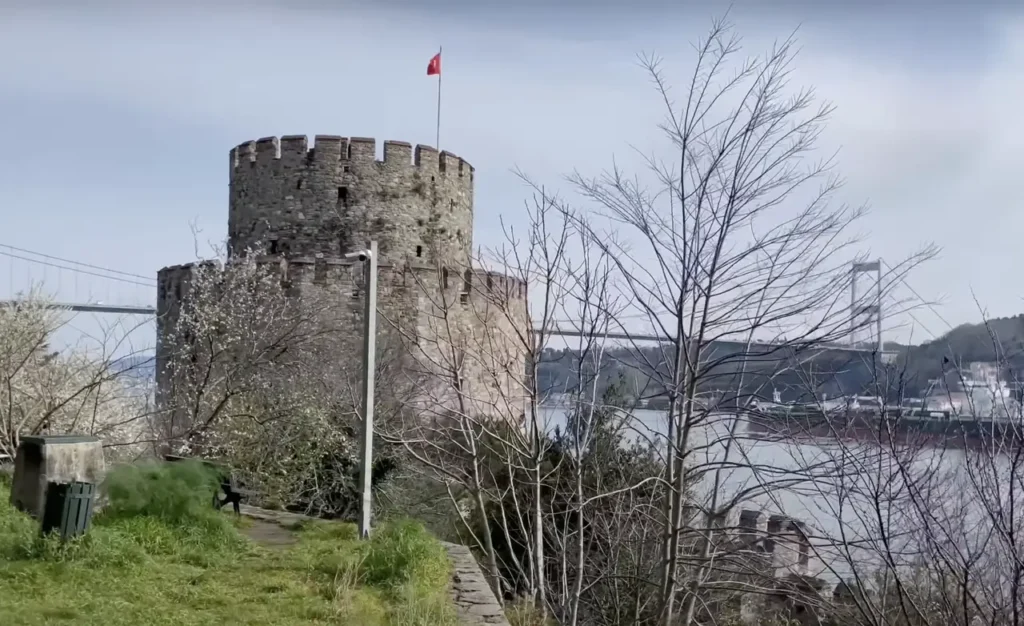
Yedikule Fortress (Yedikule Hisarı)
Known as the Fortress of the Seven Towers, Yedikule was constructed shortly after the conquest of Constantinople. Initially used as a treasury and later as a prison, the fortress has a dark history, with many executions carried out here.
One of its most significant features is the Golden Gate, a grand ceremonial gate from the Byzantine era. The fortress is an impressive example of medieval architecture and offers views over the city and the Marmara Sea.

Anadolu Hisarı
Located on the Asian side of the Bosphorus, Anadolu Hisarı was built in 1395 by Sultan Bayezid I as a fortress to control access to the Black Sea. It played a vital role in the defense of the Ottoman Empire.
Although smaller and less visited than Rumeli Hisarı, its historical significance as a part of the Ottoman Empire’s expansion strategy makes it a fascinating site for history buffs.

Bazaars
Arasta Bazaar
Located behind the Blue Mosque, Arasta Bazaar dates back to the 17th century. It originally served as a market for artisans who supplied goods to the Ottoman palace. Today, it is a quieter, more refined alternative to the Grand Bazaar, with shops specializing in high-quality carpets, ceramics, and textiles.
The bazaar offers a peaceful shopping experience, and its proximity to major historical landmarks makes it an ideal stop during a day of sightseeing.
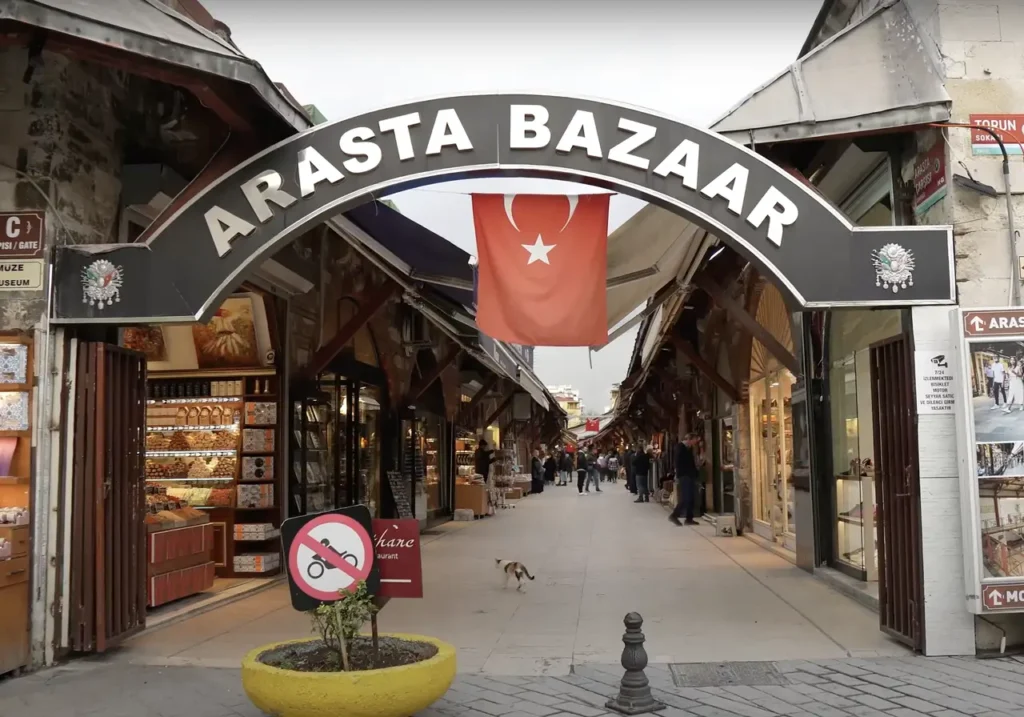
Grand Bazaar (Kapalıçarşı)
- Location: Beyazıt, 34126 Fatih/İstanbul, Türkiye
One of the oldest and largest covered markets in the world, the Grand Bazaar was founded in 1455 and has been a center of trade for over 500 years. It houses more than 4,000 shops selling everything from carpets and jewelry to spices and antiques. Wandering through its labyrinth of streets, you’ll experience Istanbul’s vibrant marketplace culture, much of which has remained unchanged for centuries. Read more >>

Spice Bazaar (Mısır Çarşısı)
Built in 1660 as part of the New Mosque complex, the Spice Bazaar is a feast for the senses. Historically a hub for trading spices, dried fruits, and herbs from around the world, the bazaar continues to sell traditional Turkish products. Located in Eminönü, near the Golden Horn, it’s the perfect place to sample local delicacies and purchase unique gifts.
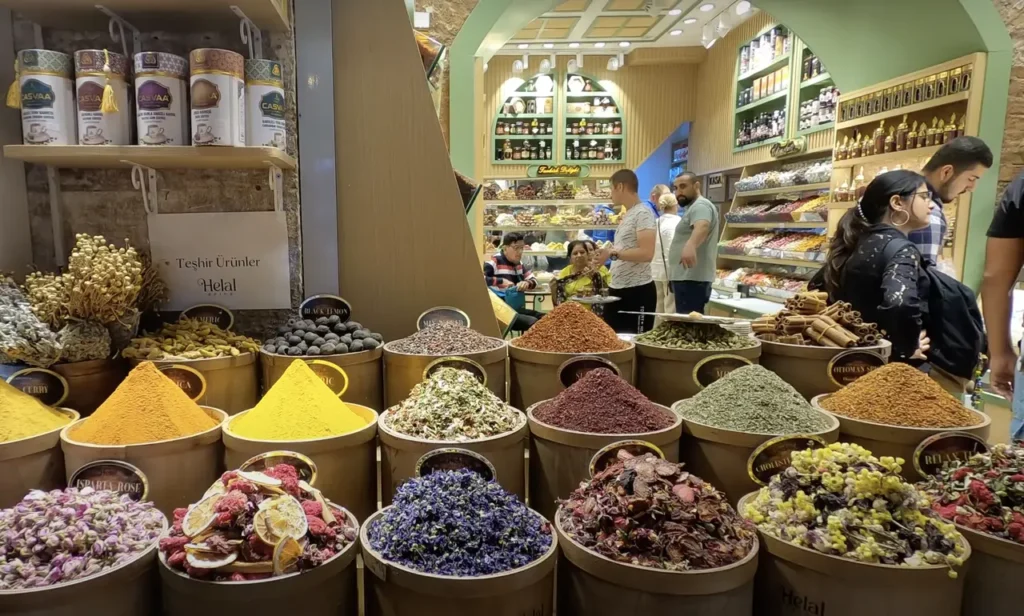
Don’t Miss The Best Tours and Cruises in Istanbul
Old City Digital Route №1
A step-by-step guide to uncovering Istanbul’s hidden gems beyond Sultanahmet. Access the route via Google Maps and a handy PDF guide, both packed with:
- Local dining spots for any budget
- Currency exchange tips
- Recommended hotels in Fatih
- Directions from the airport to Sultanahmet
- Souvenir and gift ideas
$9.99
